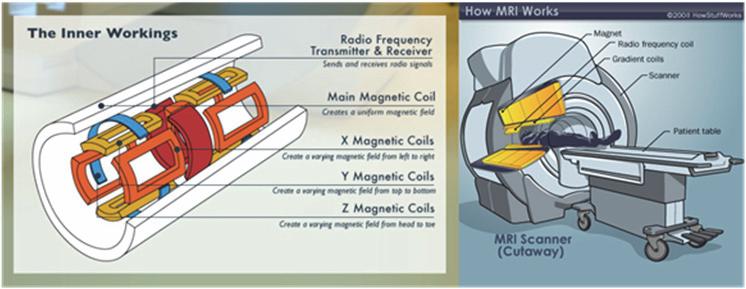
2 minute read
Science Is Local - with Rob Kirk
What has nuclear physics done for me?
Do you know anyone who has had investigations by amazing machines like MRI or PET scanners? These are used to look for problems in the body such as cancer. The physics of these things is amazing - and a bit tricky to understand (understatement!). An MRI scanner (Magnetic Resonance Imaging) - Figure 1 - uses powerful magnets (very powerful - they require liquid helium - 269 degrees Celsius below zero for cooling to get superconduction) which produce a strong magnetic field that forces protons (nucleus of a hydrogen atom - go Googling!) in the body to align with that field.

Figure 1 - magneticresonance.weebly.com/howdoes-mri-work Protons - see Figure 2 - are common in water and fat and this is what is being looked at.
Protons - see Figure 2 - are common in water and fat and this is what is being looked at.

Figure 2 - commons.wikimedia.org/wiki/ File:Hydrogen_Atom
When a radio frequency is pulsed through the patient, the protons are stimulated, and spin out of equilibrium. When the radio frequency field is turned off, the MRI sensors can detect the energy released as the protons realign with the magnetic field - they undergo “precession” which is what a top does as it spins. (Do some Googling on “precession” with respect to the Earth. “She” precesses and that helps to produce our natural climate changes). The time it takes for the protons to realign with the magnetic field, as well as the amount of energy released, changes depending on the environment and the chemical nature of the molecules. Physicians can tell the difference between various types of tissues based on these magnetic properties. To obtain an MRI image - Figure 3 - a patient is placed inside a large magnet and must remain very still during the imaging process.

Figure 3 - MRI image.
The next story will be on PET scan machines-even more amazing that MRI scans.





